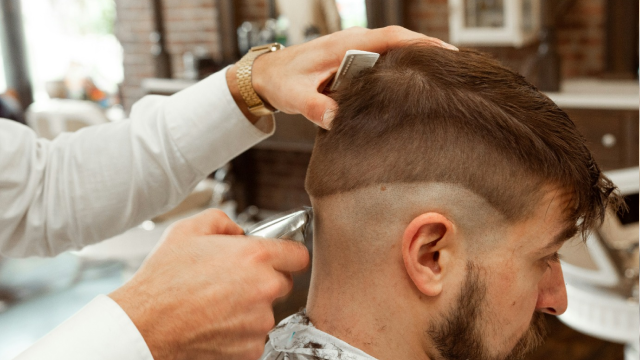Men’s hairstyles have seen a vast transformation from the 1950s to today, reflecting broader shifts in fashion, music, and cultural attitudes. Each decade brought its iconic styles, many of which are making a surprising comeback. Let’s take a nostalgic journey through the trends that defined each era and see how past styles are influencing modern grooming.
1950s: The Birth of Cool
ICONIC STYLES:
The 1950s were all about sleek, well-groomed looks. The Pompadour, as popularized by Elvis Presley, and the slicked-back style of movie stars like James Dean were the rage. These styles emphasized volume and a clean silhouette, achieved with pomade and a fine-toothed comb.
1960s: Cultural Revolution
ICONIC STYLES:
The 1960s introduced a more relaxed and experimental approach to men’s hair. The mop-top, made famous by The Beatles, became synonymous with the youth-driven cultural upheaval of the time. Meanwhile, the Mod culture in Britain brought sharp, geometric cuts into the mainstream.
1970s: The Age of Rebellion
ICONIC STYLES:
Long hair became a symbol of rebellion and freedom in the 1970s, influenced by the hippie movement and rock icons like Led Zeppelin and Jimi Hendrix. The shag, popularized by stars like Rod Stewart, and feathered looks, as seen on Farrah Fawcett, blurred gender lines in hairstyling.
1980s: Bold and Bigger
ICONIC STYLES:
The 1980s were defined by volume and edge. Styles like the mullet, which was business in the front and party in the back, and the Jheri curl exemplified the decade’s ethos. Hair bands and pop stars went for high-volume perms and spikes, using a plethora of styling products.
1990s: The Grunge Influence
ICONIC STYLES:
In response to the flamboyance of the ’80s, the 1990s saw the rise of grunge. This era embraced more natural, undone hairstyles, like Kurt Cobain’s messy locks. The buzz cut and crew cut also gained popularity, reflecting a minimalist aesthetic.
2000s: Polished and Textured
ICONIC STYLES:
The turn of the millennium brought a polished, yet textured look. The faux hawk, popularized by celebrities like David Beckham, and spiky hair reflected a more stylized approach to short haircuts, often achieved with gel and wax.
2010s to Today: Diversity and Resurgence
ICONIC STYLES:
Today’s hairstyles represent a melting pot of decades. The pompadour and slicked-back looks are back, demonstrating the timeless appeal of the 1950s, while undercuts and fades showcase the precision of modern barbering techniques. Moreover, there’s a growing acceptance of natural hair textures and longer lengths, influenced by a broader movement towards authenticity and self-expression.
Conclusion
The evolution of men’s hairstyles reflects broader social changes and the perpetual push-pull between past influences and contemporary innovation. As we see, old trends often get a modern twist, proving that style is indeed timeless.
Eager to try a vintage look with a modern twist? Visit us at Another Man Barber and let our expert barbers craft a hairstyle that pays homage to the past while looking squarely to the future. Rediscover the classic styles with us today!

